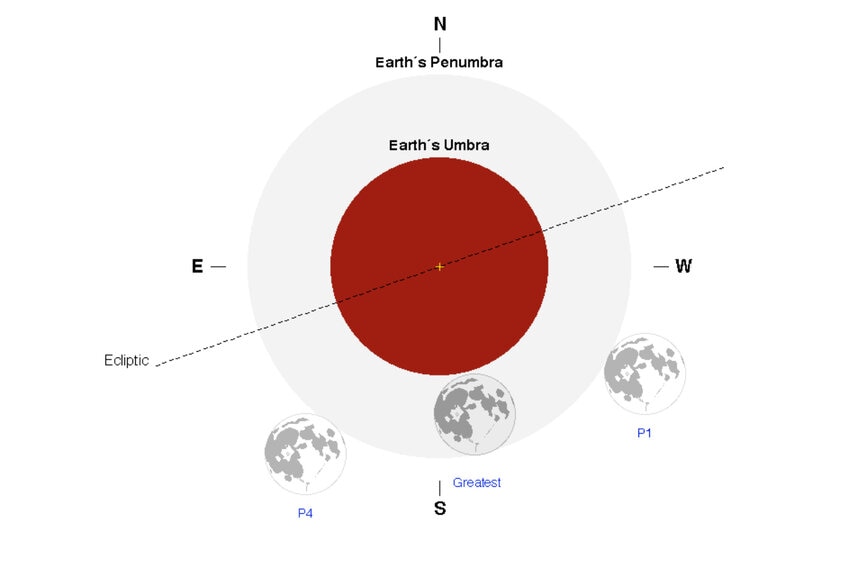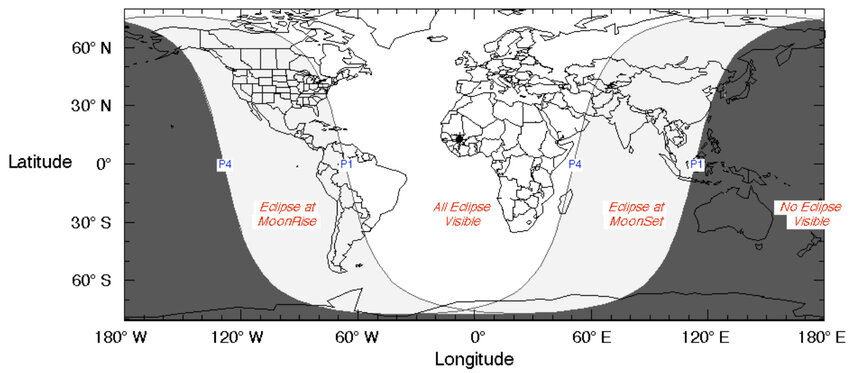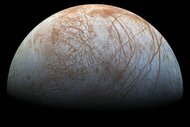Create a free profile to get unlimited access to exclusive videos, sweepstakes, and more!
Will you be able to see tonight's deep penumbral lunar eclipse?

[Above: Photo of a lunar eclipse from September 2015, taken just as the Moon started to slip into the darker part of Earth's shadow. Tonight's eclipse should look similar. Credit: Phil Plait]
Tonight — Friday, February 10, 2017 — about half the planet will be treated to a lunar eclipse. But not an ordinary one: It will be a deep penumbral eclipse, and you’ll have to be diligent to see it.
OK, so what does that mean?
Well, for one thing, the Moon won’t get as dark as it does in a total lunar eclipse. But it will get noticeably duskier, especially on one side, and that should be pretty neat to see. Also, it’ll be visible mostly to folks in Europe and Africa, but those of us in the U.S. get a view of it as well, right after sunset (see below for specific times).
An eclipse is when an astronomical object blocks the light from another astronomical object. As the Moon orbits the Earth, it sometimes slides into the Earth’s shadow in space. When it does, the Earth blocks the Sun, the Moon grows dark, and we get a lunar eclipse.
But things get a bit complicated. Because there’s nothing between the Earth and Sun, the Earth’s shadow is always pointing away from the Sun in space. But it actually casts two shadows; a dark, narrow cone-shaped one called the umbra (Latin for “shadow”) and a wider, less dark one surrounding the umbra called the penumbra (“almost shadow”). This is due to the geometry of the Sun being a disk in the sky and not a dot. I explain how all this works in my episode of “Crash Course Astronomy: Eclipses”:
The first part is about solar eclipses (the lunar eclipse part starts around 6:45), but explains why we have an umbra and penumbra. NASA also has a nice video showing the geometry of eclipses; it wasn’t made for this particular eclipse, but it does show the orbital tilts to scale very nicely:
Each lunar eclipse is different because of the tilt of the Moon’s orbit. Sometimes it passes into the umbral shadow, and we see a nice, dark eclipse. But sometimes the Moon’s orbital tilt only lets it dip its toe, so to speak, into the penumbra. If it stays near the outer edge the dimming is so minor you might not even notice!
But that’s why tonight’s eclipse (remember, that’s why I started this article in the first place) is so interesting: The Moon misses the umbra, but only by a tiny bit. That’s why this is called a deep penumbral eclipse; it passes deeply into the secondary shadow of the Earth, but not the really dark one. As the folks at Sky and Telescope note, the Moon misses the umbra by a mere 160 km! Mind you, the Moon is 3470 km across, so this is a pretty near miss. In fact, the penumbra is just narrower than the Moon itself, and the Moon is never completely inside the penumbra at any one time during this eclipse.
So, when should you go out to see it? The Moon first starts to slide into the penumbra at 22:34 UTC, or 5:34 p.m. Eastern US time. If you live on the east coast of the US that’s just after the Moon rises. Those of us farther west won’t see this part of the eclipse, because it won’t have risen yet!
The deepest part of the eclipse occurs about two hours later at 00:45 UTC — technically, in Greenwich (where UTC is officially marked) the next day, February 11, but in the US it’s still Friday night at 7:45 p.m. Eastern time. For my location, in Colorado, the Moon rises just minutes later, so for me it will already be in the deepest part. If you’re on the west coast, you won’t even see this until it’s already ¾ over. That happens at 02:53 UT (9:53 p.m. Eastern).
So, the farther east you are, the better. Anyone in Europe and Africa will see the whole thing, but it’ll be late at night. India and China will only be able to see the start of the eclipse; it’ll set before the Moon reaches the deepest area of the penumbra.
And what will you see? That’s hard to say. If we’re lucky, at the greatest point in the eclipse the northern part of the Moon will look darker than the southern side, but neither will be dark dark. More dusky, probably. It should certainly be noticeable, though. Still, it won’t get blood red like it does during a total lunar eclipse, so don’t expect that. This will be more subtle.
I’m not even sure I’ll be able to tell from where I am; the Moon will rise fully eclipsed and then get brighter over the next two hours. It kinda does that anyway as it rises and clears the murk near the horizon. I’ll take a look anyway, because every eclipse is different, so you never know. That’s part of the fun!
The next total lunar eclipse is just a year from now, on January 31, 2018. That one does favor the west coast, so y’all will get your chance. Still, it happens late at night so you might want to nap first.
And, of course, we have a major solar eclipse coming: on August 21, 2017 the path of that will sweep across the continental US in what may be the most viewed eclipse in history. And duh: I’ll have a lot more about that coming soon. Stay tuned. Until then, enjoy tonight’s show!




























